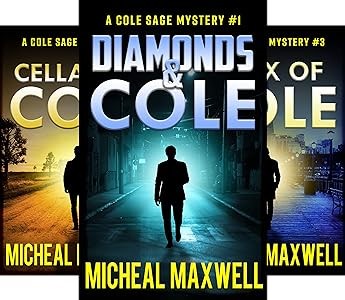Crime fiction, with its dark alleyways, elusive culprits, and relentless detectives, has long captivated readers with its intricate dance between emotion and intrigue. In the fascinating world of storytelling, where plot twists and suspense reign supreme, the question arises: Can crime fiction achieve a perfect balance of emotion and intrigue?
Let's delve into the artistry of this genre and explore how it navigates the delicate terrain between heart-pounding suspense and nuanced human emotion.
The Allure of Intrigue:
Crime fiction often draws readers in with the promise of a gripping mystery. From the first page, the narrative sets the stage for a puzzle to unravel, a crime to solve, or a shadowy figure to unmask. The allure of intrigue lies in the meticulous construction of plots, where every clue, red herring, and revelation is strategically placed to keep readers on the edge of their seats.
Crime fiction authors masterfully immerse readers in uncertainty. The unrelenting pace, unexpected turns, and the constant threat of danger create an addictive concoction that propels the narrative forward. Whether it's a classic whodunit or a psychological thriller, the genre excels at crafting stories that demand to be unraveled, compelling readers to follow the trail of breadcrumbs with bated breath.
The Heartbeat of Emotion:
While the backbone of crime fiction may be its intricate plots, the heart and soul often reside in its characters.
Authors inject depth into their protagonists, allowing readers to empathize, connect, and sometimes even sympathize with individuals navigating the murky waters of crime. A detective haunted by a personal tragedy, a criminal seeking redemption, or a victim yearning for justice contributes to the emotional landscape that enriches the narrative.
Crafting a Masterpiece
Achieving the perfect equilibrium between emotion and intrigue is akin to a high-wire act for crime fiction authors. Too much emphasis on suspense may leave characters feeling one-dimensional. On the other hand, delving too deeply into emotion risks diluting the tension and thrill that are the genre's hallmarks.
Successful crime fiction navigates this delicate balance by combining plot and emotion, allowing one to enhance the other. Characters react authentically to the events around them. In turn, the plot's pace forces characters to confront their vulnerabilities, creating a symbiotic relationship that elevates the storytelling.
Examples from the Shadows: Crime Fiction Gems
Numerous crime fiction books have managed to strike this elusive balance, leaving an indelible mark on the genre. Arthur Conan Doyle's Sherlock Holmes stories exemplify this equilibrium with brilliant deductions and glimpses into Holmes's complex psyche.
One of the recent examples comes from Micheal Maxwell's The Cole Sage Mysteries, where Maxwell has skillfully crafted a masterful fusion of suspense, humor, and emotional depth. Readers are immersed in an enthralling voyage of discovery and intrigue.
The focal point of The Cole Sage Mysteries is the captivating protagonist, Cole Sage—a former investigative journalist. Sage defies the conventional gumshoe archetype. His intricate personality, riddled with imperfections and vulnerabilities, brings an authenticity that resonates with readers.
Grab your copy today, and if you want to know more about Micheal Maxwell, click here!


No comments yet